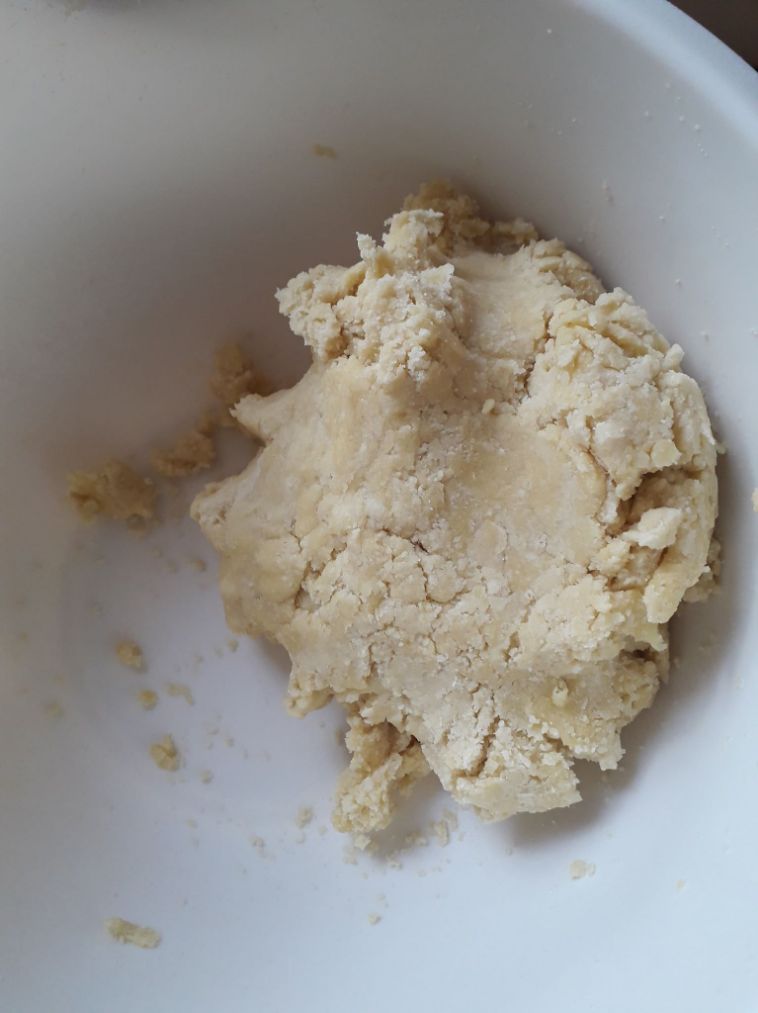Puff Pastry
This dough is a laminated dough. This is a process of layering butter onto the dough and then folding. In the oven, the liquid from the dough and butter evaporates, puffing up each layer. This gives it a unique finish with lots of flaky buttery layers. This pastry is perfect for pies, tarts and desserts. It is time consuming to make as you have to let the dough rest in the fridge between folds. But the end result is well worth it.
Flaky Pastry
Flaky pastry is a quick version of puff pastry. Rather than folding a block of butter into the dough, butter is roughly added to the flour/water dough (detrempe). It is then folded and rolled in the same way as puff pastry. It is possible to do all the folds in one go without resting, required that the environment is not too hot/humid. Flaky pastry is easier to make than puff and still gives the desired finish.
Choux Pastry
Choux pastry is a delicate, light and airy pastry. It is usually used for profiteroles and eclairs. It’s method to make it is very different to the types of pastry above. First you heat a mixture of milk, butter and water until melted (with salt/sugar often added). Then, you add flour while beating until the flour has cooked out. Eggs are then added until you have a dough. It is then usually piped and baked in the oven, where it puffs up and turns golden brown. It is then filled and served.
Filo Pastry
Hot Water Crust Pastry
Used in pies, particularly pork pies, this is a sturdy and firm dough. First you bring lard and water to the boil. Then you add it to flour and salt until you have a malleable and sticky dough. Sometimes you rub butter into the flour first to give it a richer flavour. It is then rolled out and filled before baking. The high water content and the heating before baking makes the end result stronger than shortcrust pastry. This pastry is special because it is the only time where you add the fat to the flour while it’s hot rather than cold.
Suet Crust Pastry
Suet pastry is somewhat of a forgotten treasure, used in steam puddings and jam roly poly’s. It’s similar to shortcrust pastry. and holds up wet fillings well, although it is more elastic and dense. It’s a traditional pastry that dates back hundreds of years and you can boil it, steam it or bake it. You make it by combining self raising flour, salt and suet before adding water to form a dough. Unlike other pastries, you should use it straight away and not rest it before use. This is because he raising agent in the flour will start reacting as soon as you add the liquid.. The beef suet gives this pastry a great flavour, although you can also use vegetarian suet.
So, that’s all the main different types of pastry! Try some out and see just how versatile pastry can really be.
Shortcrust Pastry
On this page are all the different types of pastry you could possibly dream of! The world of pastry can be confusing, so here is a breakdown of them all. They are all unique and wonderful in their own ways and have different uses. Learn about them all here!



One Comment